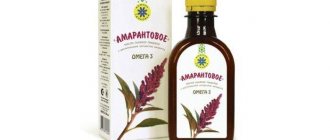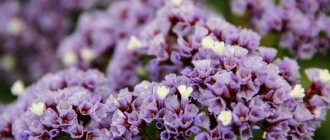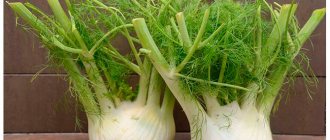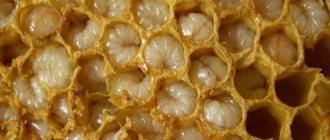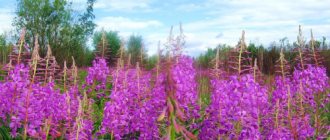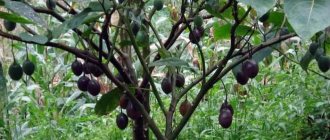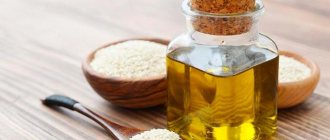Tea ceremonies have long become an integral element of the life of Russian people. Providing a pronounced relaxing effect, they allow you to escape from the everyday hustle and bustle and routine, and concentrate on truly important and meaningful things. Depending on individual preferences, ceremonial events may involve drinks with a very different set of ingredients: mint, lemon balm, thyme, etc. Next, we invite you to learn more about jasmine tea, its benefits and harm to health.
Product Description
Classic tea usually consists of two ingredients: green or white tea leaves and flower petals. The latter provide a delicate and recognizable aroma and slightly sweet taste (which is why they drink it without adding sugar or other sweeteners).
When creating tea leaves, buds collected during the flowering period of the bush are used. They are believed to contain the greatest amount of essential oils, healing and nutrients.
One mug of freshly brewed drink includes:
- vitamin complexes necessary for the normal functioning of the body (groups A, B, C, etc.);
- beneficial amino acids and organic compounds;
- minerals (potassium, magnesium, calcium, etc.).
Plants used for the production of tea products grow in India and China. The flowering period, as a rule, lasts from late spring to mid-autumn, but only those petals that were collected in the hottest summer months are used for brewing. It is believed that this particular raw material is the most aromatic and contains a powerful dose of nutrients and microelements.
How to collect and dry jasmine for tea
When collecting, you need to know exactly the right time so that the flowers contain the maximum amount of essential oils. It is better to pick them early in the morning before full sunrise. Before harvesting, the weather must be warm and dry, otherwise the raw materials will be wet. Only open white flowers are prepared for drying.
It is better to collect in a wide container, otherwise with a large harvest the flowers may suffocate, rot and become moldy. The collection period can last from May to September and even October, depending on the variety of shrub.
The collected flowers are poured onto a table or other surface covered with dry paper. The contents are carefully examined for the presence of insects, leaves, twigs that were caught during collection and thrown away along with poor quality flowers. Then spread evenly on the surface. The raw materials are dried in a warm and well-ventilated room. To ensure even drying, it is recommended to regularly turn the flowers. Drying time takes approximately 4-5 days. If their color changes or their appearance becomes unattractive, they are thrown into the trash. If good drying conditions are provided, the flowers will smell pleasant, remain white and not very fragile.
Chemical composition and calorie content
The formula is presented:
- essential oils;
- organic compounds;
- amino acids;
- alkaloids;
- tannins;
- vegetable protein;
- vitamins and minerals that ensure the normal functioning of the body.
The listed substances are contained both in the leaves of the bush and in the petals of its flowers. In order not to destroy them, brew not with boiling water, but with warm, hot water (the maximum permissible temperature is 80 degrees). As for calorie content, one cup without additives and sweeteners contains no more than 3 kcal.
The use of jasmine in folk medicine
In folk medicine, jasmine is used to treat a wide variety of diseases. Depending on the type and degree of the disease, various parts of the plant are used for treatment. There are many folk recipes for using jasmine, among which we would like to highlight the simplest and most accessible.
Properties of jasmine and its use:
1. Antiseptic. Used for wounds, damage and irritation. Treatment of various skin diseases - dermatitis and eczema.
2. Painkiller. It helps women especially well during hormonal changes in the body.
3. Antidepressant. Normalizes the functioning of the nervous system, relieves stress and anxiety.
The healing properties of jasmine flowers are valued no less than essential oil. Fragrant flowers help in the treatment of bronchial asthma and bronchitis. They are used in the form of decoctions, infusions and syrups. The most popular way to treat the respiratory system is tea.
The recipe for the drink is very simple and can always be prepared at home:
For 4 cups of boiling water you will need 2 teaspoons of jasmine flowers and 4 teaspoons of regular black or green tea. Brew like regular tea. Infuse for 4-5 minutes and drink throughout the day.
The healing properties of jasmine flowers are not limited to diseases of the respiratory system - sore throat, acute respiratory infections and others. Flowers are used to treat skin diseases, purify the blood, rheumatism and vitamin deficiency.
Both fresh and dried flowers are used to prepare the tincture. The alcohol tincture helps with dermatosis and other skin diseases; it can be added to tea and other drinks. Its preparation is quite simple: flowers and alcohol in a 1:1 ratio are mixed in a glass container, tightly closed and infused in a cool, dry place for a week.
For lotions and compresses, the tincture should be diluted - 2 teaspoons per glass of water.
Jasmine tea: beneficial properties and contraindications
White inflorescences are usually used for medicinal purposes. It is believed that they have the most pronounced effect on the body and help get rid of certain ailments.
Among the healing properties are:
- antiseptic;
- antimicrobial;
- anti-inflammatory;
- antispasmodic;
- tonic;
- immunomodulatory.
All this allows jasmine-based drinks to have a beneficial effect on the nervous system, fighting stress and depression, and relieving chronic fatigue. In addition, they significantly increase the protective properties of the body, providing a general strengthening effect. As a result, a person’s emotional background changes, anxieties and fears fade into the background, giving way to peace and inner harmony.
Black tea leaves
Jasmine teas prepared on its basis are distinguished by their pronounced invigorating and tonic properties. Acting on the principle of coffee, they help drive away the remnants of sleep and increase performance. It is recommended to drink this drink in the first half of the day to recharge your energy. It is also used to warm up after a long stay in the cold.
What is noteworthy is that this tea variety contains many tannins, which, in combination with essential oils, have a beneficial effect on the functioning of the digestive system and gastrointestinal tract. Another plus is the ability to lower the temperature in the midst of a flu or cold.
Green tea leaves
The option that is most popular, which, in general, is not surprising, is that these brewing varieties are considered the most useful and have the highest concentration of healing components.
The key advantage is a pronounced antioxidant effect. Just one mug every day can remove waste and toxins and cleanse the body of harmful compounds. In addition, the drink has obvious anti-aging properties. It’s not for nothing that all the top Western celebrities recommend it.
To be fair, we add that the rejuvenation effect has been scientifically proven. Thus, the composition contains microelements that can slow down the aging process and trigger cell renewal. For example, “Jasmine scattering” from our online store.
Famous varieties of jasmine tea
Jasmine tea is very diverse and popular in both China and the West and is available from almost every major tea manufacturer. However, besides “just jasmine”, there are several most famous varieties, each of which differs in taste and appearance.
Moli Hua Cha is a classic green tea from Fujian with the addition of jasmine. One of the favorite varieties of the Chinese themselves. They drink it especially a lot in Beijing.
Hua Zhen Wang (“Royal Jasmine Needle”) is an elite tea made from unopened tea buds covered with silver fluff. The aroma of jasmine in it is subtle, but quite pronounced, the taste is tart and sweetish. The tea infusion is light yellow in color.
Hua Long Zhu (“Dragon Jasmine Pearl”) is a twisted tea with a subtle delicate aroma and a light golden infusion. In appearance, dry tea resembles round, irregularly shaped pearls.
Bi Tan Piao Xue (“Swirling snow from the Bi Tan spit”) is a high-mountain tea with pronounced sweet notes and a fresh jasmine aroma.
Moli Zhen Zhu (“Jasmine Pearls”) is a twisted tea with a very bright aroma of flowers, a sweet floral taste and an excellent tonic effect.
Moly Feng Yan (Phoenix Eye) is a classic oval-shaped rolled tea that produces an infusion with a mild, refreshing taste.
Tea Matsesta “With Jasmine”, green leaf, with additives, 75 g -25%
338 rub. 450 rub.
Denker “Jasmine Light” tea, green with jasmine, 25 pyramids -15%
158 rub. 185 rub.
Imperial Tea Collection “Jasmine” tea, green with jasmine, 150 g -30%
304 rub. 434 rub.
India leaf tea “Green tea with jasmine”, 100 g -20%
260 rub. 325 rub.
Denker “Jasmine Light” tea, green with jasmine, 20 bags -15%
76 rub. 89 rub.
Green tea Twinings “With Jasmine”, with additives, 25 sachets 223 rub.
Green tea Newby “Jasmine Flower”, with additives, 25 sachets 540 rub.
Trickster green tea “Till Eulenspiegel”, with jasmine, loose leaf, 100 g 199 rub.
Choose jasmine tea on TEA.RU
Can pregnant women drink it: the benefits and harms of jasmine tea for women’s health
As you know, pregnancy is a period when girls must be extremely focused and responsible, and carefully monitor their own diet. Since many products are suddenly placed on the stop list at this time, the question arises: is it possible to drink jasmine drinks? Answer: yes, but without much enthusiasm, with moderation. It is best to limit yourself to one mug per day. This volume is quite enough to cheer up and recharge with energy without harm to your health.
As for lactation, during it you should still avoid such liquids. The fact is that they contain caffeine, which can enter the child’s body along with mother’s milk.
For weight loss
The components that make up the tea can speed up metabolism, thereby ensuring a gradual and healthy loss of extra pounds.
Among the valuable properties are:
- normalization of metabolism;
- cleansing the body (removing waste and toxins, excess fluid);
- improving the functioning of the digestive system.
In addition, mono-diets based on these drinks are popular. So, for a week a person is asked to give up any foods, adhering to a strict tea-jasmine diet. The effect is certainly dizzying, but such diets should not be abused.
Garden jasmine: planting and care
Jasmine bush can be planted in spring or fall. Plant it in a deep hole and fertilize it thoroughly. It is necessary to water abundantly, without allowing the soil to dry out, so that the leaves of the plant are always green and healthy.
Before and after flowering, it is imperative to fertilize with any specialized fertilizers. Jasmine blooms very beautifully, it comes in white and yellow, its fragrant aroma is very attractive.
How to collect jasmine for storage?
The use of jasmine depends on proper storage. Flowering begins in late spring and lasts all summer. To make tea, you need to collect the blooming flowers.
Article on the topic: Datisca hemp - beneficial properties, description
Massive blooming can be observed in the early morning, so collection should be done very early in the morning. After collecting, you can start drying; to do this, you need to carefully arrange the flowers on paper. Remove all foreign matter and other parts of the plant, leaves, roots. From time to time, the flowers need to be turned over so they dry more evenly. They can be stored for a year.
Growing and planting at home
You can also grow it at home. Home care is very similar to garden care and does not require much time. Perennial indoor jasmine is propagated by cuttings; they are placed in a jar of water and waited for rooting. It is best to plant in spring. There are a lot of photo instructions on planting and care on the Internet, the main thing is careful supervision of the plant and proper storage.
How to collect and dry flowers
The flowers begin to bloom late at night, and therefore it is recommended to collect them in the dark before sunrise. It is believed that it is during this period that the concentration of essential oils reaches its maximum values.
Which buds should be picked:
- healthy;
- undamaged by midges, aphids and other insects;
- not fully opened - relatively tight.
When collecting, try not to let the petals fly apart.
It is best to use natural wicker baskets or fabric bags as containers. Compacting raw materials is strictly prohibited.
As for drying, before drying, the petals are carefully washed under running water and sorted, eliminating foreign elements. Then they are laid out on paper, allowing the moisture to be absorbed. The flowers are stirred periodically to ensure even drying. The average drying time is two weeks.
In Russia, collecting jasmine is problematic due to the rare occurrence of the flower, so if you are a connoisseur of these unique flowers, we recommend using ready-made dried jasmine buds.
Use in cooking
Jasmine is used in cooking due to its fragrant aroma. Jasmine flowers add a unique taste and smell to tea drinks; they are mainly added to green tea. Tea compositions made from green tea and jasmine flowers are especially popular in England.
Article on the topic: European olive - beneficial properties, description
Flowers are also used to prepare original desserts. The desserts turn out to be very tender and delicious in taste. Jasmine flowers are often used in homemade ice cream recipes. To do this, the flowers must be soaked in cold water and left to infuse for 3 hours. The infusion obtained from soaking jasmine is poured into a saucepan and boiled, making sure to add cinnamon and sugar to the fragrant water. The mixture is cooled and proteins and rum are added to it. The resulting mass is placed in the freezer until completely solidified. In order for the ice cream to turn out airy, you need to interrupt its hardening and beat the mass; for the best effect, you should do this trick 2-3 times until it hardens completely.
Tea with jasmine petals is prepared as follows. The flowers of the plant are added to green or black tea and poured with boiling water. In a few minutes the fragrant drink will be ready.
A very tasty drink can be made from white wine and jasmine. The oil is diluted with lemon juice, a few drops of the resulting mixture are added to a bottle of white wine. The wine is left for several days and then carefully filtered. Jasmine wine is an excellent choice for a romantic date.
Jasmine scented oil can be obtained at home. Jasmine flowers are dried, then poured with olive or any other base oil. The mixture is placed in a dark place, after 14 days the product will be ready.
Jasmine leaves are sometimes added to salads. The low calorie content of the plant allows it to be used even in dietary nutrition. 100 g of jasmine contains only 1 kilocalorie
How to brew correctly
Brewing is the most responsible process that does not tolerate any errors or inaccuracies. The taste of the drink and its healing properties depend on how correctly this procedure is carried out.
The first and main rule is not to use boiling water. It is truly destructive to the most delicate jasmine petals, capable of destroying the substances and microelements included in their composition. The optimal brewing water temperature is 80 degrees.
The tea leaves are transferred to a special teapot and lightly stirred to enhance the aroma. Next, liquid is poured into the container (one liter, as a rule, requires two to three teaspoons of tea leaves). The average infusion time is about six minutes; readiness is determined by the degree of opening of the buds, as well as personal preferences for strength and richness.
Acceptable daily allowance
Tea is a rather concentrated and rich drink, excessive consumption of which can cause a number of not very pleasant side effects and lead to negative consequences. This is why it is so important to follow the dosage recommended by doctors.
So, experts advise drinking no more than two liters of aromatic liquid per day. Of course, this volume is spread over several doses, for example, in the morning, at lunch, in the evening and several hours before bedtime. This amount is quite enough to quench your thirst, recharge your energy, and increase your own performance.
You should be especially careful with drinking in the afternoon. Since it contains caffeine, you can easily trigger insomnia by simply ignoring the recommended daily intake.
For face
Surprisingly, tea and jasmine products have found application even in home cosmetology. Due to their pronounced antibacterial and anti-inflammatory properties, they effectively fight acne and acne, and remove spot rashes.
What exactly is this tea good for the skin:
- helps eliminate aesthetic defects and imperfections;
- Providing an antioxidant effect, it fights premature aging and promotes cell renewal;
- accelerates regeneration processes, promoting faster healing of minor injuries.
Quite often, the flowers of the bush are involved in the preparation of special decoctions, which are then used to steam the face. They allow you to simultaneously disinfect and soften the skin, preparing it for subsequent manipulations.
In addition, such infusions are used to create masks. Just mix oatmeal and some oatmeal tea, apply it to your skin for ten minutes, and you will be pleasantly surprised. Redness will disappear, pores will tighten, and blackheads will become less pronounced. The main thing is not to forget to use a moisturizer at the end.
Jasmine flower description and beneficial properties
Jasmine is a very popular and useful plant; due to its unique properties, it is used in completely different areas. Jasmine branches find their use even in the interior; they are used to make baskets and decorate rooms.
This plant contains substances such as essential oils, acids (formic, benzoic and salicylic), as well as sesquiterpene, phenol, triterpene, lactone, etc. Additionally, jasmine flowers include benzyl alcohol, benzyl acetate, linalool, jasmone and indole.
These substances allow this plant to have aphrodisiac properties. It should be borne in mind that the benefits of jasmine and its properties can also cause harm. It is necessary to take into account contraindications and descriptions in order to carry out treatment.
Jasmine tea: benefits and harm for women, contraindications
Uncontrolled consumption of the drink can provoke an exacerbation of gastritis or peptic ulcers, and cause gastrointestinal colic. In addition, this leads to overexcitation of the nervous system, which results in insomnia and various emotional disorders. In some cases, drinking even becomes the cause of convulsions and epileptic seizures.
It is recommended that people avoid drinking jasmine tea cocktails:
- suffering from diabetes;
- having allergic reactions or individual intolerance;
- those facing exacerbation of gastrointestinal diseases;
- with blood pressure problems – hypertension or hypotension.
A history of mental illness may also act as a contraindication.
More details about prohibitions
Despite its pronounced relaxing properties and all the benefits, jasmine tea is a natural source of caffeine. That is why it is strongly not recommended for people suffering from diseases of the cardiovascular system. The fact is that the substances that make up the drink can block certain processes in the brain, which leads to overexcitation and hyperactivity. This is very dangerous for heart problems.
Kidney disease is another important prohibition. Jasmine can aggravate the situation, causing serious swelling and other ailments.
It's no secret that many people use these types of tea to get rid of extra pounds. They are on mono-diets or simply increase the dosage of the drink. This can be detrimental to those who suffer from gastrointestinal diseases as it increases internal acidity.
Unusual Uses for Jasmine Tea
In cooking
Jasmine-flavored tea is used in cooking to create non-alcoholic cocktails or desserts. Thanks to its subtle unusual taste, tea goes well with strawberries, raspberries and other berries.
2 types of cool non-alcoholic cocktails based on tea from the Russian champion in tea mixology Natalia Prokhorenko, which will be especially pleasant to prepare in the spring:
A very unexpected way to use jasmine tea is as a marinade for fish. Before cooking, the fish is soaked in tea, and it acquires a delicate aroma and a slight taste of jasmine.
In cosmetology
Jasmine tea has anti-inflammatory properties, which allows it to be used to care for the skin of the face and body with severe inflammation. Oily and combination skin can be wiped with a disc soaked in freshly brewed tea: this helps tighten pores and get rid of the characteristic oily sheen of the skin.
Green tea with jasmine flowers improves skin condition with sunburn. Antioxidants speed up the recovery process of skin cells and soothe irritation.
Hemp tea Hempstore of Hempico “With thyme”, loose leaf with additives, 50 g 1390 rub.
Hempstore of Hempico hemp tea, loose leaf, 50 g 1690 rub.
Tea Curtis “Dessert Tea Collection”, assorted, 30 sachets -25%
177 rub. 235 rub.
Tea Richard “Royal Tea Collection”, assorted, 120 sachets -25%
428 rub. 570 rub.
Zavarkin tea “Indian black tea” black flavored, small leaf, 25 bags 30 rub.
Black tea with additives “Taiga harvest” 90 rub.
Chef Tea “Mango-Passion Fruit”, green with additives 90 rub.
Konigin Herbarium “Healthy Sleep” tea, green with additives, 20 sachets 98 rub.
Even more tea at TEA.RU
How to choose and store correctly
As for storage, everything is simple: choose a dark place where direct sunlight does not penetrate. Of course, it should not be excessively wet, as this can provoke the growth of mold spores. The best containers to use are those made from natural materials - wood, clay. Metal boxes are also suitable (many people love them due to their convenience and functionality). The only caveat is that they must be hermetically sealed.
To avoid running into low-quality fakes, make purchases only in trusted stores and from reliable sellers, such as the Russian Tea Company
